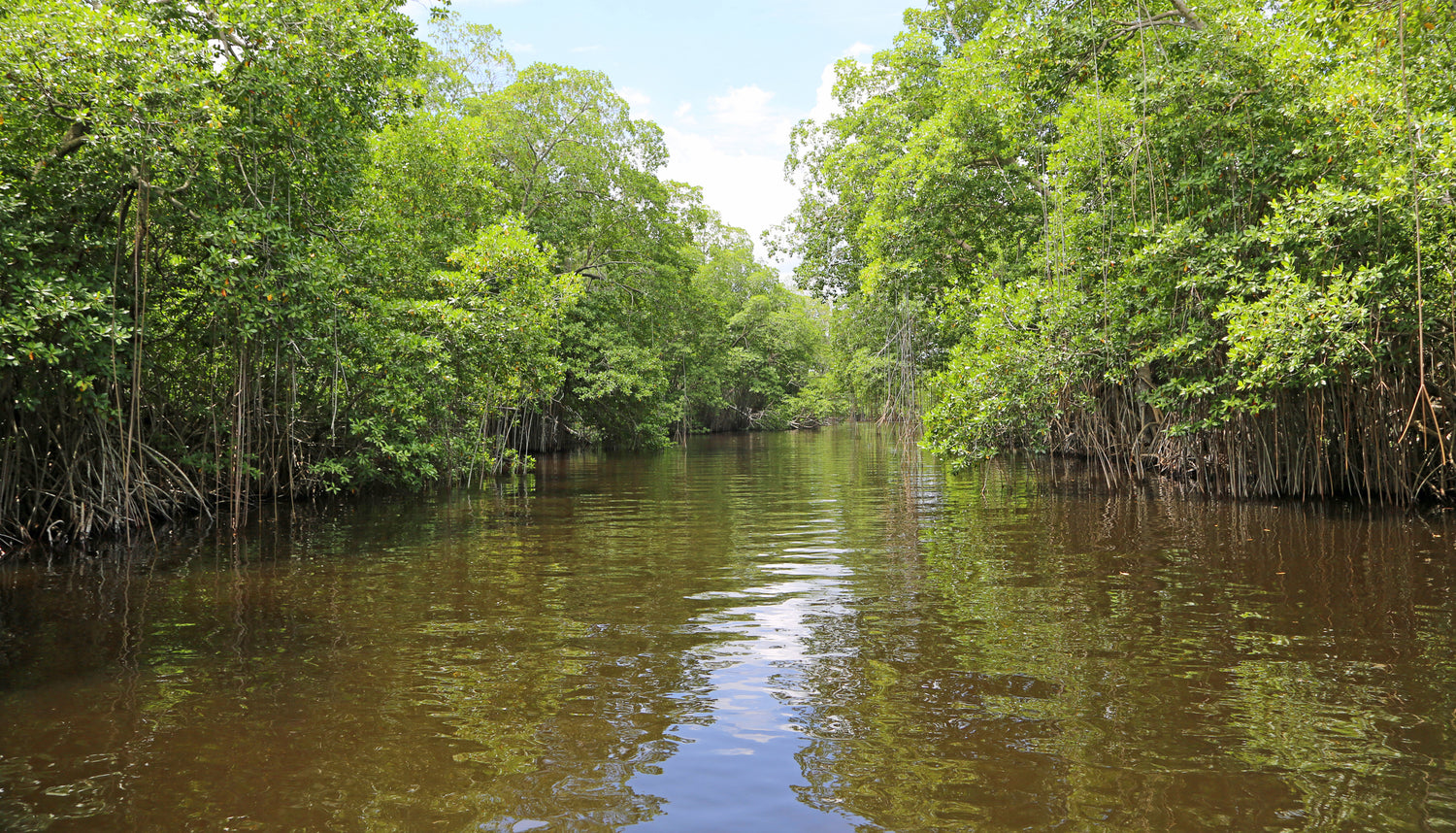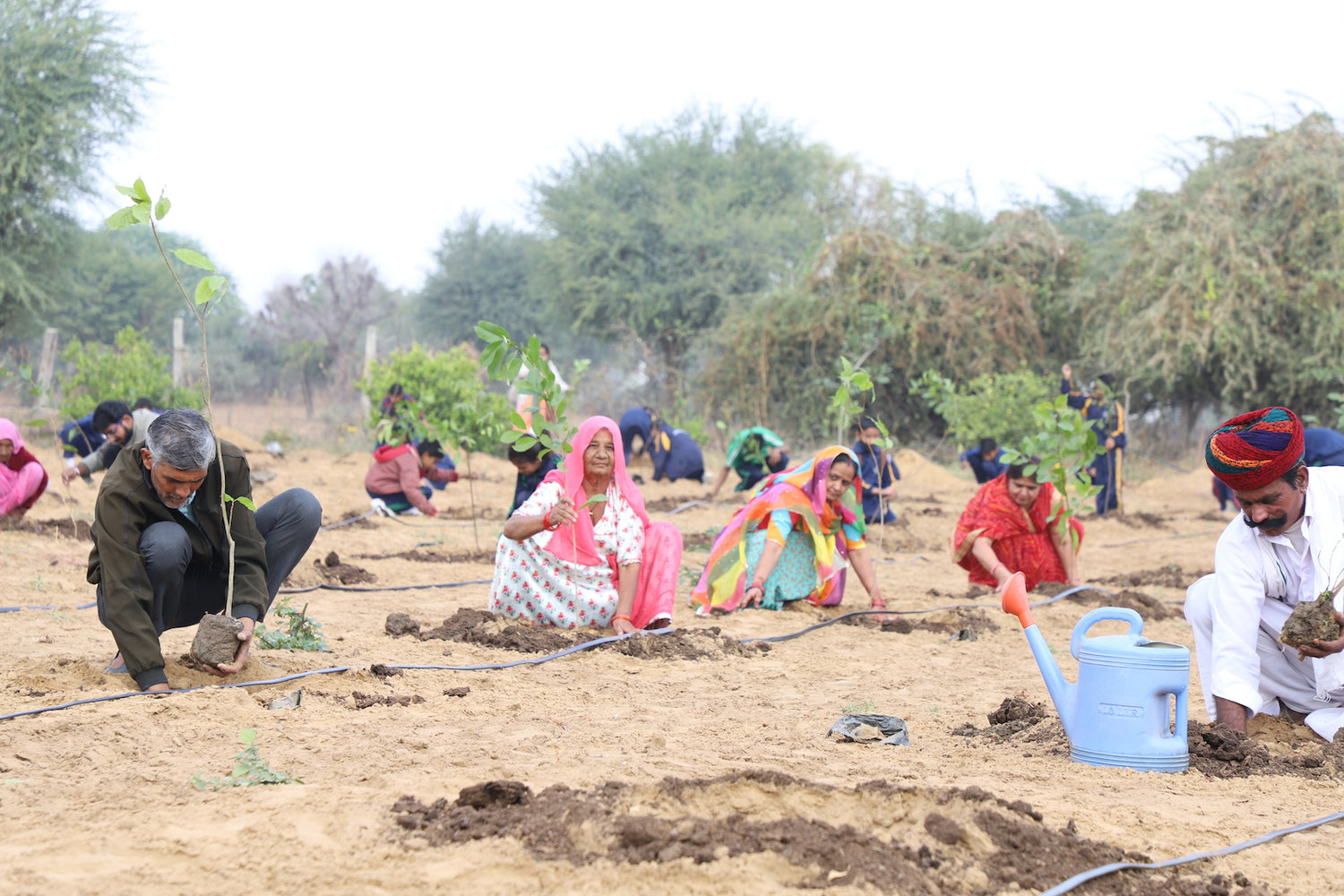Mangroves in Odisha: Bhitarkanika’s Mangrove Paradise and Wildlife Hav
Mangroves in Odisha, particularly those in Bhitarkanika, are among India’s most unique ecosystems. Often referred to as the "Amazon of India," Bhitark Read more
Connect with us
-
👥 Corporates
If you are looking for:
- 🌲 Tree Plantation Events
- 📊 CSR Projects
📧 corporate@growbilliontrees.com
📞 +91 9699723523
💬 +91 9325931304 WhatsApp (Only)
🕒 Mon - Sat | 10am - 7pm IST
-
🧩 Tree Plantation NGOs
If you are looking for:
- 💰 Financial Assistance
- 🤝 Operational Support
📧 support@growbilliontrees.com
📞 +91 9699723523
💬 +91 9325931304 WhatsApp (Only)
🕒 Mon - Sat | 10am - 7pm IST
-
🌼 Individuals
If you are looking for:
- 👥 Group Tree Plantation Drive
- 🌳 Bulk Tree Plantation
📞 +91 9699723523
💬 +91 9325931304 WhatsApp (Only)
🕒 Mon - Sat | 10am - 7pm IST
Trending
Trees for Corporates
Mangroves in Odisha: Bhitarkanika’s Mangrove Paradise and Wildlife Haven
Mangroves in Odisha, particularly those in Bhitarkanika, are among India’s most unique ecosystems.
Often referred to as the "Amazon of India," Bhitarkanika’s mangroves form a natural paradise, teeming with biodiversity and playing a crucial role in maintaining ecological balance.
These mangroves, stretching across the estuarine regions of the Brahmani, Baitarani, and Dhamra rivers, are a vital lifeline for Odisha’s coastline, protecting it from erosion, cyclones, and climate change.
Bhitarkanika has a rich historical and cultural significance. Historically, these mangroves were key to sustaining the coastal communities of Odisha.
Traditional practices like fishing and honey collection have been integral to the livelihoods of locals for centuries.
The mangroves were first documented as an essential ecological asset during British rule, and conservation efforts in the post-independence era began with Bhitarkanika being declared a wildlife sanctuary in 1975.
In 1998, it was designated as a Ramsar Wetland of International Importance.
Bhitarkanika’s mangroves are critical for biodiversity, hosting some of the rarest flora and fauna.
The region’s ecological contributions include acting as carbon sinks, mitigating climate change, and providing habitats for species like the saltwater crocodile, king cobra, and over 300 species of birds.
Mangroves also act as protective barriers against cyclones, such as the devastating Fani (2019) and Yaas (2021), absorbing storm surges and reducing damage to inland areas.
Bhitarkanika is a biodiversity hotspot, home to India’s largest population of estuarine or saltwater crocodiles (Crocodylus porosus). It also supports the rare white crocodile, known locally as "Gori."
Over 300 bird species, including the black-capped kingfisher and Asian openbill stork, flock here, making it a birder’s paradise. Aquatic life thrives in these mangroves, with abundant fish, crabs, and prawns.
- Crocodile Nursery: Bhitarkanika is famous for its crocodile conservation program, which has successfully increased the population of this apex predator.
- World’s Second-Largest Mangrove Ecosystem: Bhitarkanika is second only to the Sundarbans in terms of its dense mangrove spread.
- Migratory Birds’ Haven: Winter sees thousands of migratory birds, including bar-headed geese and Brahminy ducks, turning Bhitarkanika into a lively avian retreat.
- Rivers’ Confluence: The meeting point of the Brahmani, Baitarani, and Dhamra rivers enhances the region’s nutrient-rich ecosystem.
Bhitarkanika’s mangroves face significant challenges from rising sea levels, deforestation, aquaculture, and pollution.
Illegal logging and conversion of mangrove land for shrimp farming threaten this delicate ecosystem. Additionally, plastic waste and upstream industrial pollution degrade water quality, impacting aquatic and bird life.
Grow Billion Trees has been a key player in mangrove restoration and conservation in Odisha, particularly in Bhitarkanika. Through innovative methods, strong partnerships, and local engagement, it strives to protect this biodiversity hotspot.
Collaborations:
- Partnering with Odisha’s Forest Department and local NGOs for reforestation projects.
- Engaging academic institutions to study mangrove ecosystems and devise conservation strategies.
Execution Strategies:
- Establishing nurseries for salt-tolerant mangrove species like Avicennia and Rhizophora.
- Organizing large-scale plantation drives with community participation in degraded areas.
- Using drones and AI to map mangrove health and track restoration progress.
Promotion and Awareness:
- Hosting workshops for local communities on sustainable fishing and conservation practices.
- Promoting eco-tourism in Bhitarkanika to generate funds for restoration while raising awareness.
- Running social media campaigns to spotlight the ecological and economic importance of mangroves.
Crocodile Habitat Restoration: Grow Billion Trees has worked to restore mangroves in critical crocodile breeding areas, improving nesting success rates.
Community-Led Nurseries: Local women’s groups in Bhitarkanika have been trained to cultivate mangrove saplings, creating both ecological and economic benefits.
Eco-Tourism Boost: Collaborating with local stakeholders, Grow Billion Trees supports sustainable tourism practices, enhancing conservation while benefiting residents.
By 2030, Odisha’s mangroves, particularly in Bhitarkanika, can become a global model for coastal resilience, biodiversity protection, and sustainable livelihoods. With strategic restoration efforts and community collaboration, this region can thrive even in the face of climate change challenges.
Bhitarkanika’s mangroves are a testament to nature’s resilience and beauty. They protect Odisha’s coastline, nurture biodiversity, and sustain millions.
Protecting this paradise is a shared responsibility, and Grow Billion Trees is leading the charge. Through partnerships, innovation, and local empowerment, the organization is ensuring that Bhitarkanika remains a thriving wildlife haven and ecological treasure for generations to come.
Bhitarkanika Mangroves
A mesmerizing tangle of roots and waterways, Bhitarkanika mangroves are Odisha’s coastal warriors, shielding the land from storms while hosting a vibrant world of wildlife, from crocodiles to migratory birds.
Saltwater Crocodiles in Bhitarkanika
These apex predators are the undisputed kings of Bhitarkanika, thriving in the brackish waters. Known for their sheer size and power, they make this mangrove paradise even more thrilling.
Migratory Birds in Bhitarkanika
Every winter, Bhitarkanika turns into a feathery carnival as thousands of migratory birds, including the bar-headed geese and Asian openbill storks, arrive to enjoy this lush haven.
Mangroves and Cyclone Protection
Bhitarkanika’s mangroves act like nature’s fortress, absorbing the brunt of cyclones like Fani and Yaas, saving Odisha’s coastal communities from devastating impacts.
Biodiversity in Bhitarkanika Mangroves
From the rare white crocodile to colorful kingfishers, Bhitarkanika’s mangroves are a biodiversity jackpot, showcasing nature’s creativity and resilience.
Carbon Sequestration by Mangroves
These mangroves are unsung climate heroes, storing massive amounts of carbon while keeping the air fresher and the planet cooler. A win for Odisha and the world.
Mangroves and Aquatic Life
Bhitarkanika is a thriving nursery for fish, prawns, and crabs, making it a lifeline for local fisheries and marine ecosystems alike.
Mangroves and Local Livelihoods
Bhitarkanika’s mangroves provide honey, fish, and eco-tourism opportunities, supporting coastal communities while proving that conservation and livelihoods can go hand in hand.
Threats to Bhitarkanika Mangroves
Rising seas, shrimp farming, and pollution are threatening these vital ecosystems. Without action, Bhitarkanika’s magical mangroves could face an uncertain future.
Grow Billion Trees in Bhitarkanika
This initiative is reviving Odisha’s mangroves with reforestation drives, community engagement, and cutting-edge technology to ensure these forests continue to thrive.
Eco-Tourism in Bhitarkanika
Boat rides through mangrove-lined waterways and crocodile sightings are drawing eco-tourists, blending exploration with conservation in this tranquil paradise.
Community Conservation in Bhitarkanika
Local fishermen and women are stepping up as mangrove guardians, working with Grow Billion Trees to protect these ecosystems while securing their own futures.
You may like
Corporate Plantations
FAQ
What are Bhitarkanika’s mangroves?
Bhitarkanika’s mangroves are Odisha’s green guardians, protecting its coastlines and hosting unique biodiversity like saltwater crocodiles and migratory birds. Grow Billion Trees works tirelessly to restore and protect these ecosystems.
Why are Bhitarkanika’s mangroves important?
They safeguard against cyclones, store carbon, and support rich biodiversity. Grow Billion Trees promotes mangrove restoration to ensure these critical benefits for Odisha’s environment and people.
How do mangroves protect against cyclones?
Mangroves act as natural buffers, reducing the force of tidal waves and storm surges. Grow Billion Trees strengthens this shield by planting mangroves in vulnerable coastal zones.
What wildlife is found in Bhitarkanika?
Bhitarkanika is home to saltwater crocodiles, king cobras, and over 300 bird species. Grow Billion Trees ensures their habitats remain healthy and protected through sustainable conservation efforts.
What are the threats to Bhitarkanika’s mangroves?
Rising sea levels, deforestation, and pollution threaten these mangroves. Grow Billion Trees addresses these challenges with reforestation, community engagement, and awareness campaigns.
How do mangroves support local livelihoods?
Mangroves provide resources like fish, crabs, and honey while supporting eco-tourism. Grow Billion Trees collaborates with locals to ensure sustainable use and conservation of these resources.
How does eco-tourism benefit Bhitarkanika?
Eco-tourism generates income for locals and promotes awareness about mangrove conservation. Grow Billion Trees supports sustainable tourism models that balance exploration with preservation.
What is Grow Billion Trees doing for Bhitarkanika?
We plant mangroves, engage communities, and use technology to monitor and protect these ecosystems, ensuring long-term ecological and economic benefits for the region.
How do Bhitarkanika’s mangroves help fight climate change?
Mangroves store carbon more efficiently than most forests, reducing the carbon footprint. Grow Billion Trees scales up mangrove plantations to amplify this climate benefit.
Why are saltwater crocodiles important to Bhitarkanika?
These apex predators maintain the ecosystem’s balance and draw eco-tourists. Grow Billion Trees protects their habitats through mangrove restoration and conservation projects.
How do rivers benefit Bhitarkanika’s mangroves?
The Brahmani, Baitarani, and Dhamra rivers enrich the mangroves, supporting aquatic and terrestrial life. Grow Billion Trees restores degraded riverine mangrove areas to enhance this synergy.
Can communities help in mangrove conservation?
Absolutely! Locals are key to mangrove protection. Grow Billion Trees empowers them with training and resources to combine traditional knowledge with modern conservation techniques.























